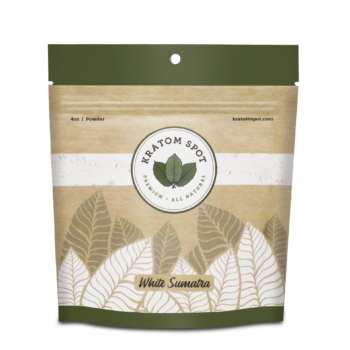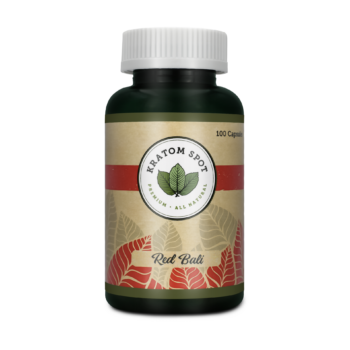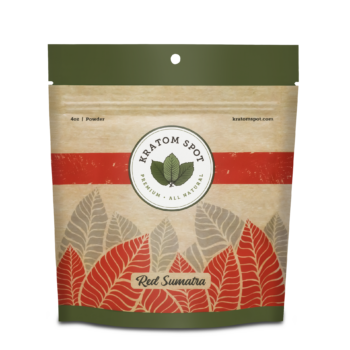Types of Kratom Strains and Effects

Type of KRATOM
Strains and Effects
Kratom is a tree that grows in the tropical climate of many countries throughout Southeast Asia. The leaves from the kratom trees are dried in the sun and then ground into a fine powder, which can either be used by itself or in a capsule form.
The growth conditions and harvest timing of kratom trees influence the resulting powder’s characteristics, defining its strain, typically identified by color and origin region.
Understanding the various kratom strains and their effects is key to selecting the most suitable for you, though personal experience is the definitive guide.

The 3 Main Strains of Kratom
The primary characteristic of a kratom strain is its color, which can be white, green, or red.
You may see differently-named strains of kratom outside of these three varieties. Still, when the types are broken down any further, it usually refers to where the leaves for different kratom strains were sourced from rather than a difference in the intrinsic properties and preparation of a particular type of kratom (with the exception of Maeng Da kratom, which refers to a crop of unusual potency, which is highly respected in the community).
We’ll quickly outline each of the major kratom strains so you can learn key differences and find the best kratom strain for your purposes.
Note: For specific effects, consult resources like the American Kratom Association, as US vendors are restricted in what they can share.
White Vein Kratom:
The Morning Choice
Experience the vigor of White kratom, harvested from youthful kratom trees. Ideal for seasoned users, this strain is known for its robustness.

Features: White vein kratom may be harvested while the leaves of the kratom tree are still young and the veins are white (similarly to how white teas are harvested from younger tea leaves). After harvesting, the leaves are dried entirely indoors with no light on them.

Alkaloid Profile: Because it is harvested at the earliest stage, white vein kratom has the highest mitragynine content of any strain, except when compared to the exceptional Maeng Da strain.
Red Vein Kratom:
The Evening Companion
Red Vein Kratom, a favorite among enthusiasts, is derived from fully matured kratom trees. This strain is celebrated for its high 7-hydroxy mitragynine content, making it a top pick for evening use.

Features: Red kratom leaves undergo a special drying process involving sunlight or UV light. Red kratom may also be fermented during its processing to create bentuangie kratom, a slightly different variation from the standard red kratom (more info on bentuangie below).

Alkaloid Profile: Red vein kratom strains have the highest amount of 7-hydroxymytragynine, which makes them prized by some users, and the perfect fit for use later in the day.
Green Vein Kratom:
The Versatile Middle Ground
Green vein kratom strikes a perfect balance between white and red strains. It is versatile and therefore prized by those looking for an anytime-of-day or “desert island” strain.

Features: Green kratom leaves are typically dried indoors at first, often in an air-conditioned room, then moved outside to finish the drying process.

Alkaloid Profile: Green kratom has a balance of alkaloids, somewhere between white and red vein strains. This is what makes it so versatile for users of all needs.
Exploring Other Kratom Varieties

Maeng Da Kratom:
The Pinnacle of Potency
Originally from Thailand, Maeng Da Kratom is a result of meticulous cultivation, offering exceptional quality and strength. Growers replicate the farming practices to grow Maeng Da varieties in other regions — carefully curated for high quality and potency. Maeng Da varieties may be classified and marketed as both red and white kratom, as Maeng Da has a characteristic blend of the traits of red vein and white kratom. It is generally a more intense and potent version of the base color strain.

Bentuangie Kratom:
The Fermented Red
Kratom strains are also named after their geographic origins, like White Borneo from Borneo or Red Bali from Bali, Indonesia. Regional differences subtly influence the alkaloid profiles and effects, offering a rich selection for enthusiasts.
Different regional strains of kratom change the alkaloid profile of the resulting strain and, as a result, the effects users will experience. However, the region will not have as significant impact as the other factors described above.

Yellow Vein Kratom:
The Hybrid Blend
Unlike the primary strains, Yellow Vein Kratom doesn’t originate from a specific leaf color. It’s typically a blend of two strains, like white and green or green and red, offering a unique experience.
Read more about yellow Kratom in our in-depth blog.

Kratom Strains
Named for Their Source
Bentuangie, a red kratom variety, undergoes fermentation during drying, which is believed to enhance its effects. It’s particularly favored for its distinct properties and is often regarded as superior for evening use.




















